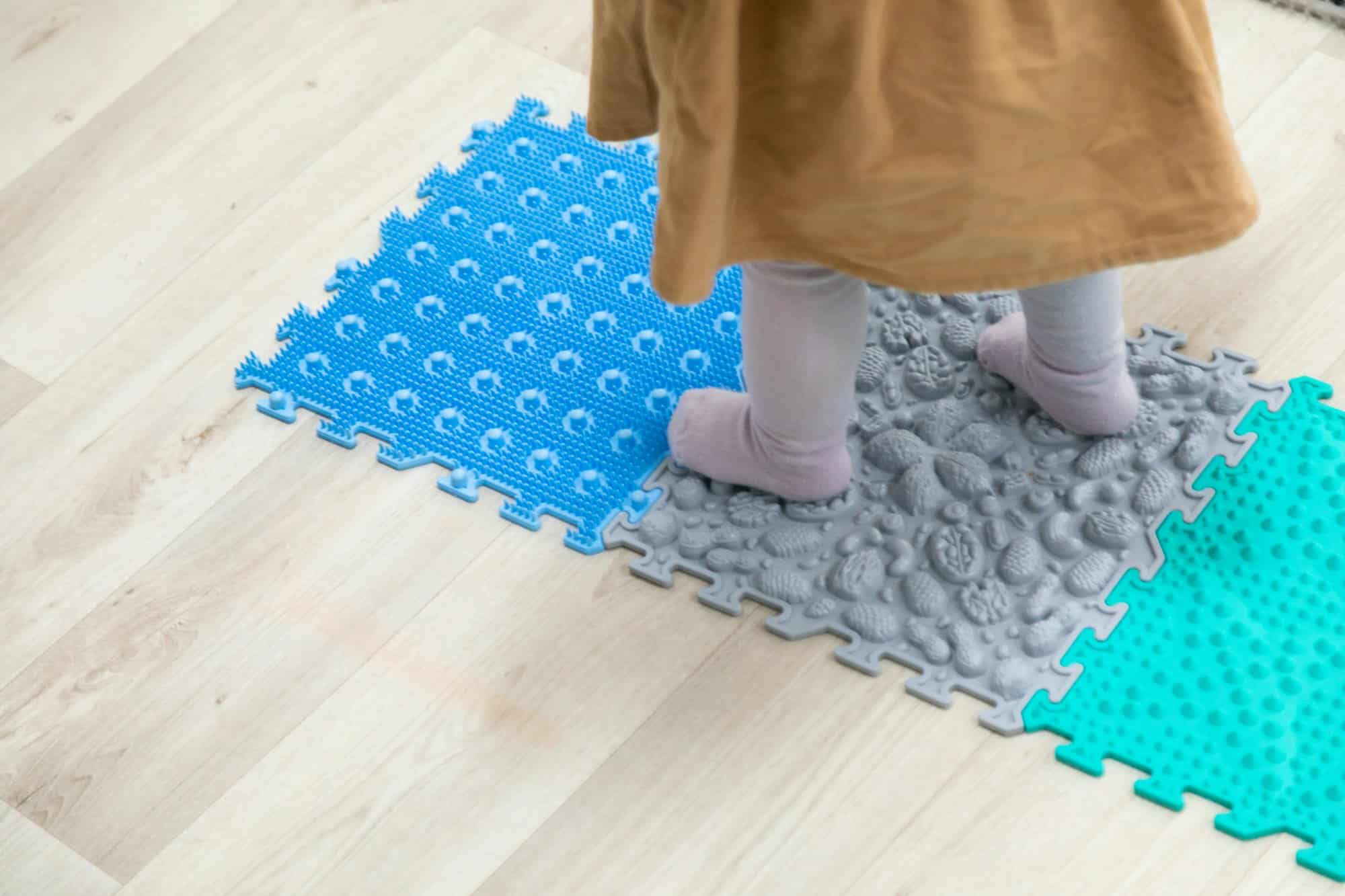What’s the best way to create a sensory play area for children with autism in your garden?

In a world that can sometimes be overwhelming for children with Autism Spectrum Disorder (ASD), creating a safe, calming, and engaging space can make a world of difference. One such space that can be easily tailored to the needs of children with ASD is a sensory garden. This specially designed outdoor environment offers a therapeutic and interactive setting that can help children with ASD to develop, learn and relax. This article will guide you on how to create a sensory garden in your backyard that is tailored to meet the unique needs of children with autism.
Understanding Autism and the Role of Sensory Gardens
Before you start planning your sensory garden, it’s crucial to understand the nature of autism and how sensory gardens can be beneficial. Autism is a neurodevelopmental condition that affects how a person perceives and interacts with the world around them. Children with ASD often have heightened or reduced sensitivity to sensory stimuli. They may find certain noises, smells, tastes, textures, or lights overwhelming, whilst being under-responsive to others.
Dans le meme genre : What Are the Best Solar-Powered Gadgets for an Off-Grid Home Office?
This is where a sensory garden comes in. A sensory garden is an outdoor space designed to stimulate all five senses. It incorporates features that children can touch, smell, see, taste, and hear. These gardens are carefully designed to offer controlled sensory experiences, which can help children with autism to manage their sensory processing difficulties more effectively.
Planning Your Sensory Garden
The first step in creating a sensory garden is to plan it out. You need to consider the size of your garden, the plants and features you will include, and how the space will be used. Here are some important points to consider:
Lire également : How to Develop a Home Cleaning Routine Using Natural and Non-Toxic Products?
-
Space: Ideally, your sensory garden should have different areas dedicated to different senses. This includes an area for plants with various textures and smells, a space for watching birds or insects, and a spot for water play. Make sure that the garden is safe and easily accessible for the child.
-
Plants: When choosing plants, think about their sensory qualities. Some plants, like lavender and mint, have strong scents that can be calming for children with autism. Others, like sunflowers and lamb’s ear, have interesting textures that encourage touch. Also consider plants that are visually appealing or attract wildlife.
-
Features: In addition to plants, consider other features that can stimulate the senses. Wind chimes, bird baths, and water features can all add auditory interest. Tactile paths made from different materials, like gravel, sand, or wood, can provide varied touch sensations.
Choosing the Right Plants for Your Sensory Garden
Plants play a central role in any sensory garden. To create a garden that appeals to children with autism, you will need to consider not just the look of the plants, but also their smell, feel, and even taste. Here’s what to keep in mind when choosing plants:
-
Touch: Choose plants with a variety of textures. Soft and fuzzy plants like lamb’s ear can be soothing, while plants with rough or rubbery leaves can provide a different tactile experience.
-
Smell: Aroma can have a big impact on our mood and behaviour. Lavender and chamomile are known for their calming properties, while mint and rosemary can be invigorating.
-
Sight: Visual appeal is also important. Brightly coloured flowers are eye-catching and can help to stimulate visual processing.
-
Taste: If the child enjoys gardening, consider adding edible plants like herbs, vegetables, or berries. This can offer a safe way for them to explore taste in the garden.
Incorporating Water Features and Other Sensory Elements
While plants are the main focus of any garden, there are many other elements that you can incorporate to stimulate the senses. Water features, for example, can offer a calming auditory experience and provide a chance for kids to engage in water play. You might install a small fountain, a bird bath, or even a fish pond.
Aside from water features, you can also include elements like wind chimes, outdoor musical instruments, or bird feeders to create an engaging auditory environment. For the sense of touch, consider creating a tactile path with different materials, or adding a sand pit or a digging area.
Remember, the key is to create a safe, accessible, and engaging space that caters to the unique sensory needs of the child with autism.
Making Your Sensory Garden a Success
Creating a sensory garden for a child with autism requires thoughtful planning and design. But the result – a tailored, engaging, and therapeutic outdoor space – can be truly transformative. In your sensory garden, children with autism can explore, learn, and just be themselves in a safe and stimulating environment.
While the design elements discussed in this article are important, the key to a successful sensory garden is flexibility. Every child with autism is unique, and their sensory needs and preferences can change over time. Therefore, it’s important to observe how the child interacts with the garden and be willing to make adjustments as needed.
Creating a sensory garden is not a one-time project, but an ongoing process. But with patience, creativity, and a bit of gardening know-how, you can create a space that truly meets the needs of your child with autism. So why not start planning your sensory garden today? It could be a rewarding project that makes a real difference in the life of your child.
Installing a Music Wall in Your Sensory Garden
Music is a universal language that can soothe the senses, promote relaxation, and stimulate cognitive processes. This is especially true for children with autism, who often respond positively to musical stimuli. A music wall can be a great addition to your sensory garden, offering both auditory and tactile sensory experiences.
A music wall is a section of your garden where you hang various objects that produce different sounds when struck lightly. Some popular items to include on your music wall are wind chimes, bells, drums, cymbals, and even homemade items like pots, pans, and steel spoons.
When choosing items for your music wall, consider the types of sounds they produce. Some children with ASD may prefer softer, lower-pitched sounds, while others may enjoy higher-pitched or more resonant tones. It’s also important to hang these items securely and at a suitable height for the child.
In addition to providing sensory stimulation, a music wall can help improve motor skills as children reach out to play the instruments. It can also encourage creativity and self-expression, and serve as a fun and engaging activity in your sensory garden.
Designing a Sensory Friendly Backyard for Children with Autism Spectrum Disorder
Transforming your garden into a sensory friendly backyard can make a significant difference in the life of a child with autism spectrum disorder. It’s about creating a space where they can explore their senses in a fun, safe, and controlled manner.
As well as incorporating sensory elements like plants, water features, and a music wall, remember to ensure the garden is safe and easily accessible. Avoid plants with sharp thorns or plants that can be toxic if ingested. The pathways should be wide and clear, with a stable surface to prevent tripping or slipping.
A comfortable seating area can also be a great addition. This can serve as a calm retreat for the child if they need a break from sensory stimulation. Adding a canopy or umbrella can provide shade on sunny days and create a cozy, enclosed feeling that many children with autism appreciate.
Finally, engage the child in the planning and maintenance of the garden. This involvement can foster a sense of ownership and responsibility, and gardening itself can serve as a calming and therapeutic activity.
Conclusion: The Benefits of a Sensory Garden for Children with Autism Spectrum Disorder
Creating a sensory garden for your child with autism can provide numerous benefits. It offers a safe and engaging environment to explore sensory experiences, thereby helping them manage their sensory processing difficulties more effectively. It can also foster a sense of calm and relaxation, and provide opportunities for learning and development.
The key to a successful sensory garden is to keep it flexible and adaptive to the child’s changing needs and preferences. Sensory gardens should not be seen as a fixed project, but rather as an evolving space that grows with your child.
Remember, the goal is not to create a perfect garden, but to create the perfect garden for your child. So, involve them in the process, respect their sensory preferences, and be patient and creative. In doing so, you will create not just a garden, but a sanctuary for your child with autism.
Investing in a sensory garden can be a rewarding experience that extends beyond the physical benefits. It may take time and effort, but every step you take in creating a sensory friendly backyard will contribute to enhancing the quality of life for your child. You will not only be fostering their growth and development but also creating a space filled with love, understanding, and acceptance.
